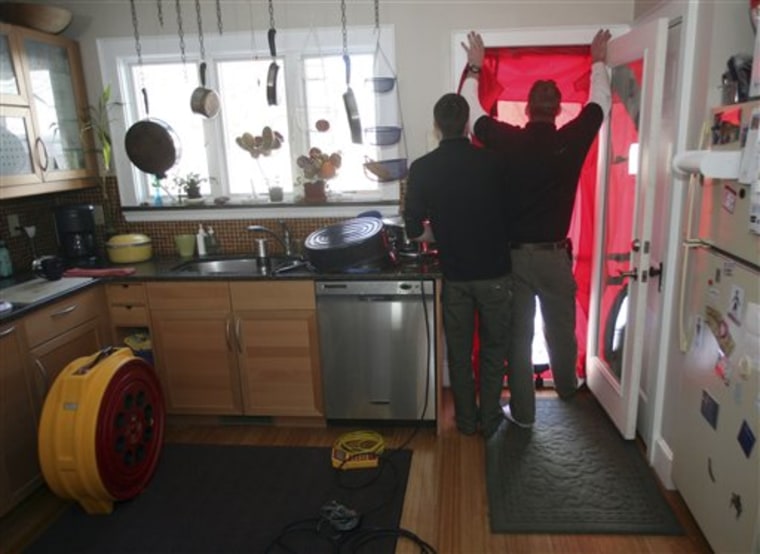Critics of the $787 billion economic stimulus program are not really balking over caulking: They just don't think pouring substantially more money into home weatherization will give a quick kick to the reeling economy.
There's $5 billion for weatherizing modest-income homes over the next few years in the sweeping stimulus legislation that Congress sent to President Barack Obama.
Obama wants a sevenfold jump in the number of homes weatherized each year — from about 140,000 to 1 million households.
But critics argue that much of the new money will be chewed up by the sheer cost of implementing the program and training people to carry it out. Either way, it's a huge increase from the $447 million that Congress authorized for this purpose in the current budget year.
Scramble to develop training
People who question the initiative say it will do little or nothing to create jobs in the short term. Still, states are scrambling to develop training programs for work that can be as simple as using caulk to seal cracks, or as extensive as replacing leaky windows or old furnaces.
A key question is whether state and local agencies can ramp up soon enough to use the money effectively.
"Any program that receives that much of an increase, you cannot spend the money efficiently in that short a period of time," said Tom Schatz, president of the watchdog group Citizens Against Government Waste. "The money simply can't flow through the system that quickly."
Some Republicans complain that not enough jobs would be created to give the slumping economy a timely jolt.
"Having the federal government pay for caulk and insulation may or may not be a sensible idea, but it will do little or nothing to create jobs in the short term, and it has no place in a bill designed to get our economy moving again," said House Republican leader John Boehner of Ohio.
An energy 'three-fer'?
Obama touts the Energy Department's weatherization program as a "three-fer" that will create tens of thousands of jobs, cut energy costs for many poor and working-class families while making the nation more energy independent.
"That really is an extraordinary step," said Mark Wolfe of the National Energy Assistance Directors' Association, which represents state-run low-income energy assistance programs. "A lot of these are great entry-level jobs, but you still have to train people."
Wolfe said he expects states with large programs already in place — such as Massachusetts, New Jersey and California — will best handle the increase. Other states could face a tougher time.
Florida weatherizes about 1,500 homes annually. Stimulus money could add several thousand more households. That poses a challenge for state agencies seeking to match deserving households with qualified weatherization workers.
"Training will be the biggest obstacle," said Norm Gempel, who manages Florida's weatherization program.
Maine's experience
Maine officials last summer launched new weatherization worker training programs when home heating oil prices were soaring to record levels.
"We have seen what Maine looks like with oil at $5 a gallon and we are scared to death of it," said Dale McCormick, director of MaineHousing, a state agency that administers the federal aid. "And so everything started happening."
Maine is getting $2.5 million for weatherization this winter. The state could get as much as $76 million from the stimulus, which McCormick said according to Energy Department estimates could create 3,848 new jobs.
Maine spends about $3,500 per household and typically cuts energy costs by at least 20 percent, McCormick said. The income limit in Maine for a family of four to get aid is about $47,000.
